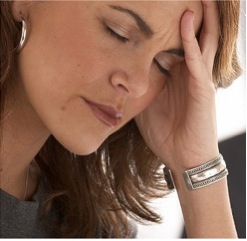Who Suffers from this Hair Loss Disease?

In child-age boys and girls, the incidence of this condition is equally divided. However, it becomes more prevalent in females into teen age and adulthood. Though the cause of the disease is not entirely known, research shows that the following signs, symptoms, and links point to who may be at risk for trichotillomania:
- Someone with an imbalance of brain chemicals known as neurotransmitters
- Someone facing a great deal of stress
- Someone with depression or anxiety
- Someone who has a family member with trichotillomania (genetics)
Hair Restoration Means Recognizing the Symptoms
In order to heal, a person must first know that she/he has the disease and be willing to admit it. This can be a difficult step, since most people suffering trichotillomania find it embarrassing and will deny it to friends and family. patients will oftentimes even conceal the hair loss by wearing scarves, hats, false eyelashes, eyebrow pencil, etc. You may have trichotillomania if:
- You can’t resist the impulse to you’re your hair
- You feel an inner tension before pulling the hair
- You feel satisfied or relieved after pulling the hair
- You accumulate bald patches where you’ve been pulling the hair
- You have associated behaviors, like inspecting the hair root, eating the hair, chewing the hair, pulling the hair between your teeth, twirling the hair
Treatment for Trichotillomania
For this impulse control disorder, the path to hair restoration begins with the mental health of the sufferer. Children usually recover from the condition, but successful treatment in adults is more difficult. Getting treatment as soon as possible will increase the chances of recovery and minimize the disruption it may cause to the person’s quality of life. Once diagnosed, treatment begins with a psychiatrist or a psychologist and may involve:
- Behavior therapy (habit reversal training)
- Cognitive therapy
- Antidepressants (SSRIs)
